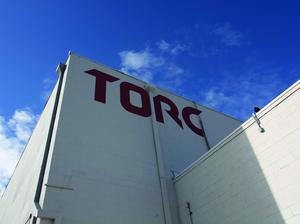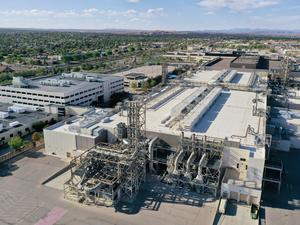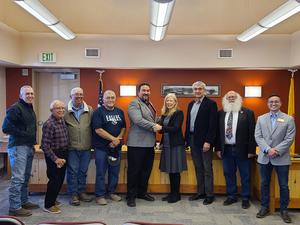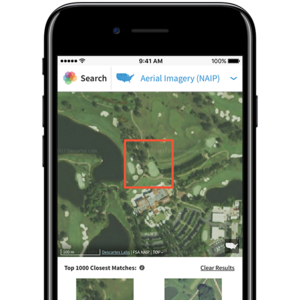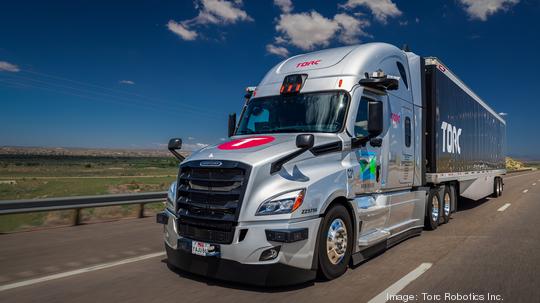
Developing technology to ensure up to 80,000-pound tractor-trailers can drive hundreds of miles safely without human control is no simple task. But Torc Robotics Inc. seems poised to try and make that a reality.
Torc's technology is twofold. The company is developing an autonomous driving system that will integrate into the chassis of tractor-trailers. It'll connect the system to a mission control interface using an Amazon Web Services-partnered cloud service.
The autonomous driving system is what Torc calls a virtual driver stack, which includes over two dozen hardware components like lidar sensors, radar cameras and infrared cameras.
"The entire sensor suite sweeps around the truck and gives you an overview of what's where and what we're looking at the most," said Chris Harrison, vice president of platform development at Torc.
Read More: In Albuquerque, this autonomous driving company found everything it needed to test its tech
All of the cameras and sensors integrated into the trucks connect to a mission control center that allows a logistics manager to monitor the tractor-trailers' activity. The autonomous system provides constant feedback to the logistics managers through a mix of different interfaces, said Klara Oberhollenzer, Torc's director of product management, virtual driver mission control and maintenance and care.
So, although drivers won't be in the trucks themselves, "autonomous vehicles will always require human support," she said.
But Torc is designing the autonomous driving system to perform all safety-critical functions independently of human control, like changing lanes or pulling onto the side of the road in case of an accident.
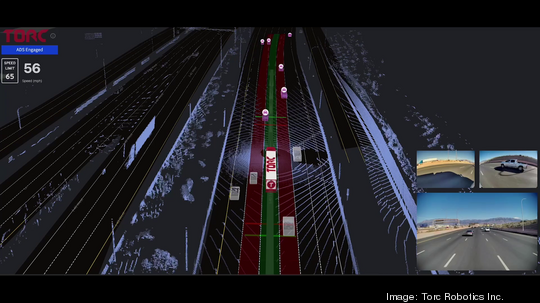
To test the virtual driver stack Torc is using Freightliner Cascadia trucks developed by original equipment manufacturer Daimler Truck. The German-based automotive company acquired a majority stake in Torc in 2019.
"This takes the best of both worlds for us and creates a unique model," Harrison said. "In the end, Daimler Trucks will sell the autonomous-ready Cascadia right from the production line, and Torc will sell the virtual driver stack to the fleets."
Torc's targeting a customer base of large fleets with more than 4,000 class-eight vehicles, Oberhollenzer said. Class-eight vehicles include massive trucks with gross vehicle weight ratings — the maximum allowable weight of a fully loaded vehicle — over 33,001 pounds.
To ensure the system is entirely safe and ready for the market, it'll go through years of "rigorous real-world testing," said Dushyant Wadivkar, Torc's vice president of system design and safety engineering. The product will only be ready for the market when the testing is complete, and the company can't share a definite date on when that will be, Wadivkar said.
Before Torc's testing trucks hit the road, the company does a slew of closed-course testing and real-world simulations. Then it takes the tech to public roads, comparing the results from these on-the-road tests with more computer modeling.
"And on top of that, we have system engineering," Wadivkar added. "A classic top-down breakdown of what we need from a customer's perspective and how that lines up with what we get from the actual hardware."
The ultimate goal of Torc is to save lives, its Chief Strategy Officer Andrew Culhane said. The company will do this by making sure its autonomous driving system is, Culhane said, "better than the best human driver."
This article has been updated to correct the name of Torc Robotics Inc.'s vice president of platform development. Torc's vice president of platform development is Chris Harrison, not Chris Richards. The name has been corrected on both references.
